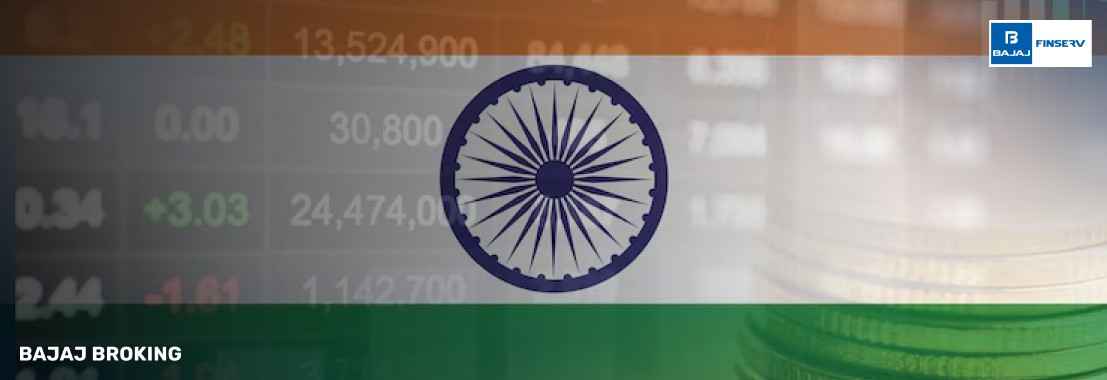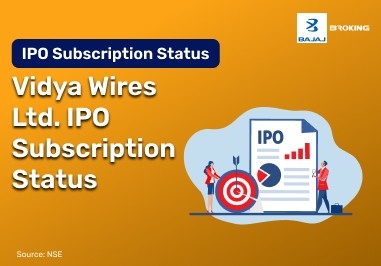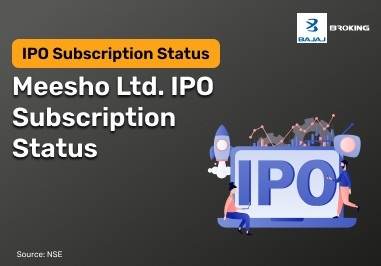For every country, its economy is its backbone. It is, in a way, a country’s identity. The stronger the economy, the stronger the country, the more prosperous its people. Simply put, a country’s economy is like a system that helps organize how a country uses its resources, like land, money, and labour, to make and share goods and services. It decides how things are made, who gets them, and how people trade or use them.
Needless to say, all around the world, countries differ, and so do their economic landscapes. And because all countries have their way of functioning, they may have different types of economies. While broad classifications can divide all the countries into different categories, every country and its economy are unique. While some follow a set standard, there are some, like India, that have a more mixed kind of economy.
Read on as we discuss more about what is a mixed economy, how India functions as one, and much more.
What is a Mixed Economy?
An economy is the system whereby goods and services are produced, distributed, and consumed. Economies may be classified as either capitalist, socialist, or mixed. In a capitalist economy, commodities are allocated according to people's purchasing power, typically, in favour of the wealthy. In a socialist economy, on the other hand, production is planned by the state, and commodities are allocated according to people's needs, for equality.
Now let’s come to a mixed economy. A mixed economy combines aspects of socialism and capitalism, with active engagement by the government and private sector. The organization works to balance economic freedom with social welfare.
India follows a model of mixed economy. The government controls some sectors in the interest of the people, and private business flourishes in others. In the Indian economy, there is involvement of both the private sector and the government in economic activities. This type of system takes after capitalism and some aspects of socialism to maintain economic growth as well as social welfare.
Other examples of a mixed economy are the United States, the United Kingdom, Australia, and Canada.
History of India's Economic System: From Independence to a $5 Trillion Dream
India's independence in 1947 was more than just a political achievement. It gave birth to dreams of economic and social change for millions. Today, the nation's path is a mix of ambition, grit, and reform as it strives to become a $5 trillion economy. Here are some of the major milestones that defined India's economic journey:
The nation was beset with many Post-Independence Challenges that included poverty, poor literacy rates, and the economic effects of British deindustrialization. The nation's unity and survival were in doubt.
The Nehruvian Vision of Prime Minister Jawaharlal Nehru focused on state-directed industrialization. Planning took center stage, and as a result, the Planning Commission was established in 1950.
There were food emergencies and foreign reliance in the 1960s. India secured food and milk in the form of Green and White Revolutions through the initiatives of leaders like Lal Bahadur Shastri and visionaries like Verghese Kurien.
Wars, a large fiscal deficit, and the 1966 rupee devaluation were Economic Shocks that defined the stormy years, yet India persevered.
The 1991 reforms brought Liberalization and opened the economy to private industry, foreign capital, and market-led growth.
The last few years have witnessed a Digital Revolution. Fintech, edtech, and e-commerce startups have given rise to a vibrant entrepreneurial landscape.
Key Features of a Mixed Economy
Let us take a look at some of the important features of the mixed economy in India:
1. Coexistence of Public and Private Sectors
India adopts a mixed economic system wherein the public and private sectors coexist. Under such an arrangement, private enterprises deal primarily with small-scale and consumer industries like cottage industries and agriculture. The public sector, by contrast, assumes responsibility for managing big and strategic industries like heavy engineering, defense production, and atomic energy.
2. Key Role Played by Economic Planning
The government plays a pivotal role in planning economic development in the nation. By having formalized plans it sets out goals and strategies for both the public and private sectors to adhere to, such that national goals are achieved through coordination and cooperation.
3. Balance Between Freedom and Control
India's mixed economy also finds an equilibrium between freedom of the economy and regulation. While companies have the freedom to operate and charge prices, in times of emergencies, the government steps in and regulates the economy, ensures stability, and redistributes essential commodities fairly through institutions such as the Public Distribution System (PDS).
4. Focus on Citizen Welfare
One of the primary objectives of this economic system is the welfare of the people. The public sector provides employment opportunities and guarantees basic services, while private organizations are incentivized, through fiscal and monetary means, to contribute to overall economic development. This system puts the welfare of the people ahead of the mere chase for profit.
Private and Public Sectors in India's Mixed Economy
India's mixed economy consists of both the private and public sectors, and both sectors contribute significantly to the development of the country. The private sector is composed of companies owned by individuals or groups of individuals, whereas the public sector consists of companies owned and operated by the government.
The private sector contributes to the development of the economy through job creation, innovation, and increased production in sectors such as agriculture, industry, and services. The public sector, on the other hand, deals with providing basic services, including education, healthcare, and infrastructure. The public sector also deals with critical sectors such as defense, railways, and atomic energy.
Over time, India has turned towards increased private sector participation. The government has implemented policies such as privatization, disinvestment, and liberalization to promote private business development. Nevertheless, the public sector also continues to play a crucial role, particularly in the field of social services and large-scale infrastructure. Along with the public sector, the private sector contributes to balanced and inclusive growth within India.
Advantages of a Mixed Economy
Take a look at the advantages a mixed economy like India can expect:
1. It Allows Economic Freedom
India's mixed economy gives people and businesses the autonomy to make their own economic decisions. People are free to choose their occupations, consumers are free to spend their income as they desire, and private firms are free to perform and flourish, subject to the confines of the government's policy.
2. There is a Focus on Welfare
The government takes an active role in ensuring the well-being of its citizens. It comes up with policies and initiatives that secure workers by providing good wages, secure working conditions, shelter, and other vital services that improve social well-being.
3. There is Effective Resource Allocation
By deliberate economic measures, the mixed economy seeks to make efficient use of resources. Government planning avoids shortages, minimizes market swings, and enhances productivity as a whole. This interplay between market freedom and state control assures steady and consistent economic growth.
Disadvantages of a Mixed Economy
To fully understand the Indian economy, it is important to know the drawbacks of a mixed economy:
1. There is Inefficiency in the Public Sector
The public sector enterprises often tend to underperform due to reasons like bureaucracy, corruption, and the absence of accountability. These problems can severely effect productivity and lower the efficiency of government-owned services.
2. Too Many Restrictions on the Private Sector
Far too many regulations and interventions can restrict the efficiency of private businesses. When there are strict labor laws and bureaucratic red tape, it can discourage innovation and hinder the growth of businesses.
3. There’s the Fear of Nationalisation
The government has the power to take over private businesses, this is called nationalisation. The threat can depress investment and decrease the incentive for businesses to expand or venture.
4. Government Employees May Manipulate Policies
Since the private sector plays a significant role in the economy, government officials close to private companies can use policies for their interests. This may result in undue benefits and corruption.
5. Undermining National Planning
When particular individuals or groups are shown undue favors, it can run against the purpose of national economic planning. These factors can mar development priorities and block equitable growth.
Government's Contribution to India's Mixed Economy
When it comes to the Indian mixed economy, the government is rather involved, and that is quite crucial. The government contributes in numerous ways, take a look:
The government takes responsibility for supplying essential goods like food and medicine to underprivileged communities, ensuring no one is left without basic necessities during emergencies or tough times.
The government is also responsible for promoting national development. For this, it allocates funding and leads the construction of vital infrastructure such as roads, bridges, and railway networks across urban and rural areas.
Ensuring industrial growth is another key contribution of the government. It designs specific policies targeting sectors like renewable energy, IT, and biotechnology, encouraging innovation, investment, and long-term economic expansion.
The government introduces welfare schemes like healthcare services, subsidies, and financial support to improve living standards and provide assistance to economically weaker sections of society.
Foreign trade is managed by the government, which offers incentives to exporters, signs international trade agreements, and promotes economic ties with other countries to boost economic growth.
Foreign Investment in India's Mixed Economic System
Just like most other countries, foreign investment has been crucial to India’s economic development also as it can contribute towards job creation, innovations in technology, and facilitate the overall development of the country.
To induce greater foreign direct investment (FDI), investor-friendly policies have been brought out by the Indian government. These consist of making procedures simpler and providing tax relief. FDI assists various sectors like telecommunications, media, and defence in modernizing them.
India is becoming increasingly significant in the world economy. Its contribution to the world economy, based on purchasing power parity (PPP), grew from 4% in 2000 to approximately 7.5% in 2023. The International Monetary Fund (IMF) projects that this will grow to around 10% by 2030. As growth in China is slowing down, India's robust economic performance will be able to balance global growth. India's GDP per individual in PPP terms has increased more than fivefold since the year 2000 to USD 10,233 in the year 2023.
However, certain challenges remain. Issues such as project approval delays, land acquisition, fears about safeguarding local industries, and environmental concerns can pose hurdles for foreign investors.
Obstacles Encountered by India's Mixed Economy
India is among the world's largest economies in nominal GDP terms. Yet, as the economy matures, it is confronted with several persistent challenges.
1. Low National and Per Capita Income
India's per capita income and national income are still relatively low in comparison with other big economies. As these are proxies for the health of the country's economy, the low values imply sluggish and unbalanced growth.
2. High Income Inequality
Even with economic development, India has tremendous wealth and income inequality. While poverty has decreased, economic gains are still not evenly distributed.
3. Agriculture Dependence
The economy of India continues to be heavily dependent on agriculture. This dependence speaks of limited diversification and modernization in most regions of the country.
4. Population Pressure
India is the world's most populous nation with a population of more than 143.81 crores. The fast growth burdens resources and contributes to increasing unemployment.
5. Unemployment Problem
Most experience "jobless growth," particularly in rural regions. A huge number of the working population is agriculturally bound, where there is underemployment as well as low productivity.
How Globalization Influences India's Mixed Economy?
India's engagement with global trade is something new, rather, it dates back to ancient times. The Indus civilization and the Gupta Empire are examples of exports, specialization, and cross-border commerce in goods like textiles and copper.
It was during the 1990s, the Indian government introduced major economic reforms to open up the country to the global market. These changes reduced trade barriers and encouraged foreign trade, investment, and technology exchange. Ever since, the government has continued to ease trade restrictions every year. Over the years, India has seen strong growth in key sectors like IT, pharmaceuticals, and automobiles.
With the world becoming a global village, there are more job opportunities and better access to international markets and technology. There has been remarkable progress in infrastructure, too, with world-class airports and highways. Overall, globalization has played a big role in boosting India’s economic development.
Conclusion
India has not had an easy ride, but it is now set firmly on a growth path, led by innovation, policy change, and a new generation committed to achieving the $5 trillion vision. With the combination of both socialism and capitalism, maybe we have got the best of both worlds. While we have a long road ahead, the Indian economy continues to strive and adapt to the ever-changing economic ecosystem.














